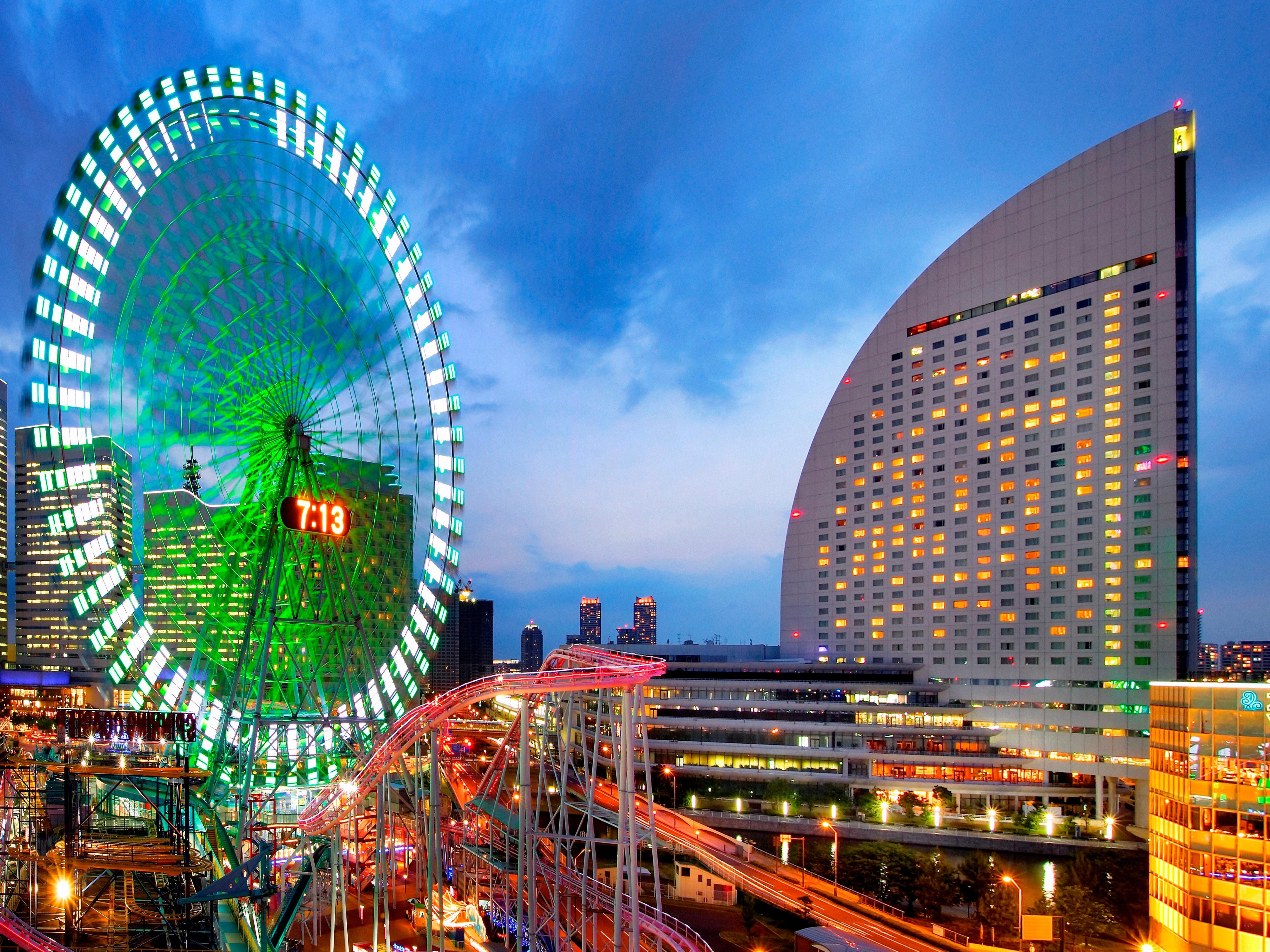Matt here. This is my first post under this name, so I'll try to make it a good one. Yoroshiku onegai shimasu! On Friday (2/18) I secured a rare day off work to head up to Yokohama and take an entrance exam for the Inter-University Center for Japanese Language Studies. If I get in, I'll leave with full fluency (level 1 Japanese Language Proficiency Test certification), as well as a sure spot in a PhD program. I'll hear in a month how I did. So that's the business part of the post out of the way.
I took the shinkansen up from Nagoya again, and I planned to study the whole way. However, when the sweet college student next to me nearly spilled the opera score she was preparing into my lap, we struck up a conversation and I wound up practicing my Japanese for a couple hours the old-fashioned way: by talking with a native. I felt pretty well prepared after that.
From Shin-Yokohama station I took a couple different lines down to Minatomirai, Yokohama Harbor, which is where the Inter-University Center (IUC) building is. I took the subway steps up to a sizable mall, and, being on my own for the first time in a long time, I indulged in the one thing I miss out on when I'm with Abby: mountains of wheat. No kidding, I walked into the bakery there, grabbed a tray and tongs, and just got one of everything I could grab in a self-imposed one-minute timespan. And then I sat down with my book on Japanese grammar and put many breads in my face. The great irony, though, was that when I looked up from my barbaric feasting, I found I was sitting under a box of informative flyers about the wonders of rice flour. So I took one as a consolation-prize for your usual narrator.
Saturday. We went back to Yokohama Harbor early, this time to Chuukagai (Chinatown). Before noon we met up with Nik's girlfriend, Megumi (you may remember her from last time, too), her friend, Misa (ditto), and Misa's friend, Hiromi. "What would you like to eat?" they asked me. I considered briefly, and then told them what was on my mind: "Eight. Hundred. Gyoza." And so we went to a famous back-alley restaurant called Touzan (Dong Xian in Chinese), where we ordered a decent amount of Chinese food, though only 20 gyoza for the five of us, which was not what I had requested. But I still enjoyed the lunch, and I told the old owner chopping vegetables behind me that it was "Hao-chi ji le" (extremely delicious), which she enjoyed immensely.
When we left the restaurant my four friends ushered me onto a bus, saying vaguely that we'd be going to a park. The park, Sankeien, is a little ways south of Chinatown, about 15 or 20 min. by bus. (Once the driver saw Nik and me get on, he began translating everything he said to the passengers in uncommonly fluent English, even urging us at one point to "scootch" back so more passengers could fit.) It was a short walk from the stop to the park, where we were greeted by:

It was a real honor to meet the reincarnation of Lao Tzu. Also within the entrance, a pond with ducks down from Siberia for the winter:

And, perhaps most importantly, the plum blossoms of late February:

There was a display of entries in a bonsai/decorative plant contest:
And just down the path from there was a little house where a koto performance was just starting as we walked up:

That lasted a blissful half an hour, and then things took a turn for the life-changing. To be continued...




Comments
Post a Comment